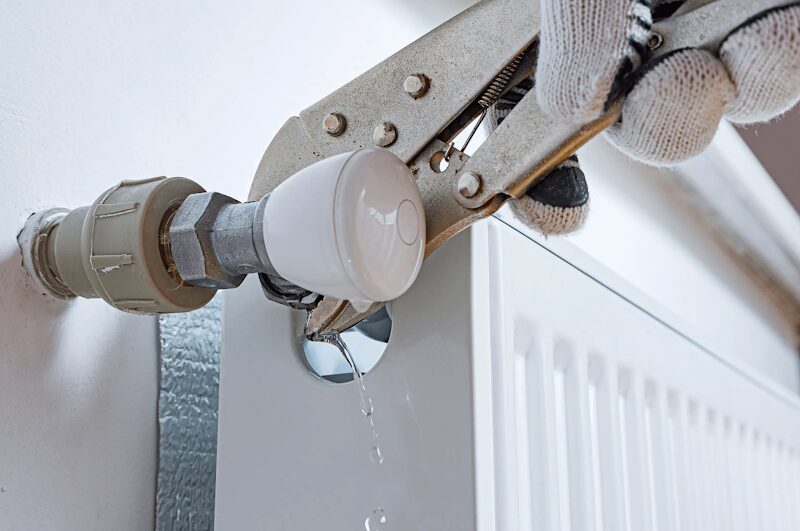Restoring a radiator is a great way to keep your heating system running efficiently while extending its lifespan. Whether you have an old cast iron radiator or a sleek modern aluminium one, a proper restoration can improve heat output and ensure it lasts for years. In this guide, we’ll walk you through everything you need to know from checking its condition to giving it a fresh, polished finish.
Importance of Restoring a Radiator?
Restoring a radiator offers multiple benefits:
Better Efficiency: Over time, radiators can accumulate dust, rust, and internal buildup, reducing their ability to heat a room properly. A thorough restoration removes these obstructions, allowing heat to circulate more effectively, making your home warmer without overworking your heating system.
Longer Lifespan: Old radiators were built to last, but neglect and wear can take their toll. Restoring and properly maintaining them can prevent corrosion and leaks, ensuring they continue to provide reliable warmth for generations to come.
Cost Savings: Replacing a radiator can be expensive, not just in terms of the unit itself but also the installation. Restoring an existing radiator is a much more budget-friendly option, helping you avoid unnecessary costs while still improving your home’s heating efficiency.
Assessing Your Radiator’s Condition
Before beginning restoration, a thorough assessment is necessary. Carefully inspect your radiator, as identifying potential issues early can save you time, money, and hassle in the long run. Check for:
1. Rust and Corrosion
A little surface rust is common and can usually be sanded away and treated with a rust inhibitor. However, if you notice deep corrosion, particularly around joints or seams, it could be a sign of structural weakening. In such cases, consulting a professional might be the best action to ensure safety and longevity.
2. Leaks and Cracks
Small leaks may only require sealants or tightening of connections, but be on the lookout for persistent drips. If you have a cast iron radiator, cracks can be a serious issue, often requiring welding or, in some cases, complete section replacement. Ignoring leaks can lead to water damage, so it’s always best to address them promptly.
3. Blockages
Over time, radiators can accumulate internal sediment and sludge, which restricts water flow and reduces heat output. If you notice cold spots or hear gurgling sounds, your system might need flushing. A radiator flush can help clear out debris and restore efficient heating.
4. Paint Build-Up
While a freshly painted radiator can enhance the aesthetics of a room, too many layers of old paint can act as insulation, preventing effective heat transfer. If your radiator has thick, uneven paint layers, stripping it down to the metal and repainting it with heat-resistant paint can improve both its appearance and efficiency.
By taking these steps, you can determine whether your radiator simply needs a little tender loving care or if it requires professional intervention to bring it back to peak performance.
Step-by-Step Radiator Restoration Process
1. Preparation and Safety Measures
- Before you get started, make sure to turn off the heating system and let the radiator cool down completely.
- For safety, wear protective gloves, safety goggles, and a mask to avoid contact with rust, dust, or any chemicals.
- To keep things tidy, lay down a protective sheet or tarp under the radiator to catch any debris or drips.
2. Removing the Radiator
First, turn off the valves to stop the water flow. Then, place a bucket underneath to catch any leftover water as you drain the radiator. Using a wrench, carefully disconnect it from the pipes. Before moving it, tilt the radiator to let out any remaining water to avoid spills.
3. Cleaning the Radiator
Start by using a stiff brush to sweep away any dust and dirt that has built up over time. Grab a sponge or cloth and wash it down with warm, soapy water if it needs deeper cleaning. For radiators with rust spots, a wire brush or sandpaper can help scrub away those rough patches, leaving the surface smoother.
4. Stripping Old Paint and Rust
If the radiator has layers of old, chipping paint, a chemical paint stripper can make the job easier—just be sure to follow the instructions on the label. Once the paint softens, use a putty knife or scraper to remove it.
For any leftover rust or rough areas, sandpaper or a power sander will help smooth everything out, getting the radiator ready for a fresh coat of paint.
5. Repaint and Reassemble
- Apply a heat-resistant primer to protect the metal.
- Paint the radiator with heat-resistant paint in your chosen colour.
- Once the paint is dry, reattach the radiator to the pipes and turn the valves back on.
6. Priming and Painting
- Apply a rust-inhibiting metal primer to prevent future corrosion.
- Let the primer dry completely before moving on.
- Use heat-resistant radiator paint, applying thin, even coats.
- Allow the paint to cure fully before handling.
7. Reinstalling the Radiator
- Carefully reconnect the radiator to the pipes and secure it with a wrench.
- Open the valves to refill them with water.
- Bleed the radiator using a radiator key to remove air pockets.
8. Testing the Radiator
- Turn the heating system back on and check for leaks.
- Ensure the radiator heats evenly and efficiently.
- Make any final adjustments if needed.
Restoring a radiator might seem like a big job, but it’s worth the effort. Not only will it make your home warmer and more energy-efficient, but it’ll also save you money in the long run. Plus, there’s something satisfying about bringing an old radiator back to life and giving it a fresh, polished look. So, roll up your sleeves, grab your tools, and get ready to transform your radiator into a heating powerhouse!



































